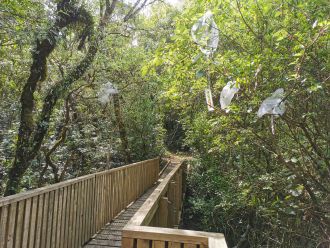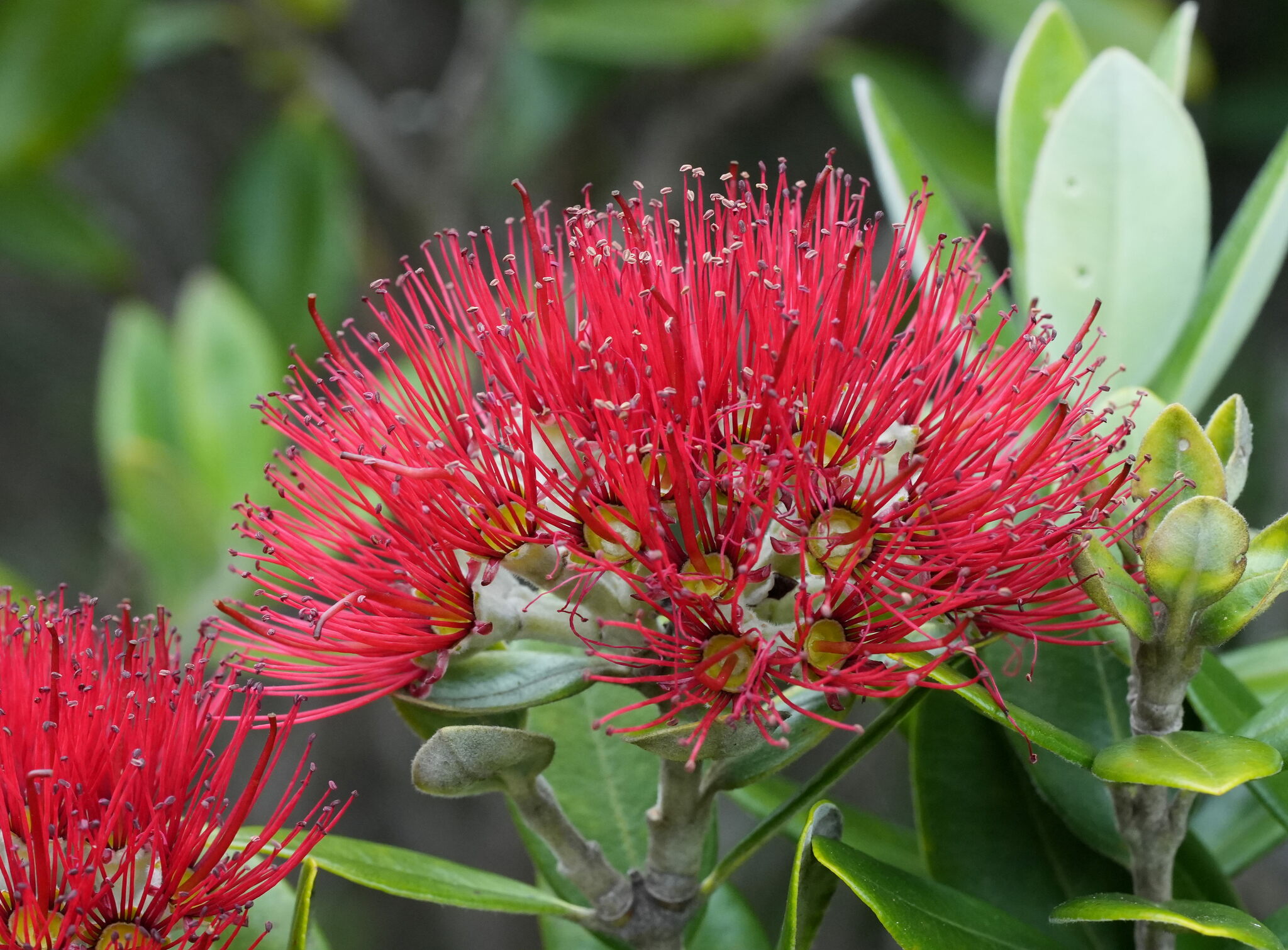Media release
From:
Nectar study offers sweet gains for beekeepers and conservation
New research from the University of Waikato shows how nectar supply varies with changes to climate, offering sweet insights for industry and conservation alike.
Nectar is an important food supply for many of New Zealand’s native birds and insects, while floral nectar, such as from mānuka, is a vital ingredient in the country’s honey industry.
Waikato researcher Dr Johanna van Delden’s study, published today in Frontiers in Plant Science, shows clear differences in nectar traits across New Zealand’s climate zones and common species.
“We found that climate influences nectar volumes differently across species, and we were able to measure these effects,” she says.
Interestingly, Dr van Delden says, no single pattern applied to all of the trees sampled.
“Wetter conditions didn’t always mean more nectar, nor did drier conditions consistently lead to higher concentrations. For instance, sugar amounts increased with increased annual rainfall in tarata (also known as pittosporum or lemonwood) but decreased in tı̄ kōuka (also known as cabbage tree).
“Each species responded differently, likely reflecting their evolutionary differences. To compare them would be like comparing elephants and mice – both are mammals, but their biology and ecological responses differ enormously.”
The research gives scientists the ability to model nectar volume and sugar levels as well as flower size and weight across New Zealand for each of the native species studied, allowing it to be put to practical use.
For beekeepers, the models can highlight where hives are likely to produce higher-quality honey, guiding decisions on where to move their bees.
The findings are also valuable for conservation.
“It means those conservation teams who are releasing native birds to places such as Kāpiti Island can assess which tree species are present and predict whether there will be enough nectar to sustain the birds.
“If food supplies look insufficient, the data can point to alternative locations with better chances of survival.”
Over the course of two consecutive years, Dr van Delden and her team – AUT’s Professor Sebastian Leuzinger, Dr Sarah Richardson from Manaaki Whenua – Landcare Research, and University of Waikato’s Associate Professor Michael Clearwater – have been sampling nectar from eight very common native plant species across New Zealand.
“Our goal was to cover all the country’s main climate zones, and we managed to collect data from nearly all of them.
“For each species and site, we measured nectar volume and concentration to see whether trees in drier climates produced less nectar of higher concentrations, potentially based on higher evaporation and limited water availability in the soil,” Dr van Delden says.
In the North Island flowers were taken in Auckland, Taranaki, Hawke’s Bay and Wellington. In the south samples were collected from Nelson-Tasman/Marlborough, Canterbury and Dunedin.
The eight trees that were sampled were ti kōuka (cabbage tree), kōwhai, karo (pittosporum crassifolium), tarata (pittosporum or lemonwood), pōhutukawa, kōtukutuku (fuchsia excorticata), kōhūhū (pittosporum tenuifolium/ black matipo) and mānuka.
While there wasn’t a single pattern consistent across all species, a trend that did emerge was that sunnier sites generally produced larger flowers with less nectar, while drier areas tended to produce nectar with higher sugar concentrations.
This research, part of Dr van Delden’s doctoral thesis, was funded by a Ministry of Business, Innovation and Employment Endeavour Research Programme ‘Building Resilience and Provenance into an Authentic Māori Honey Industry’ awarded to Manaaki Whenua – Landcare Research and an Endeavour Doctoral Scholarship awarded to Dr van Delden.
Multimedia






 New Zealand
New Zealand



